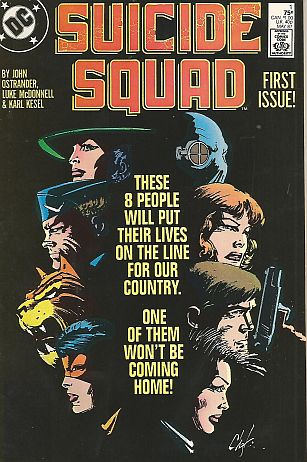Unleashing Chaos: Exploring the Intricacies of Suicide Squad #1 (VF) – 1987 First Issue
Introduction:
In the dynamic realm of comic books, few series have captured the essence of anti-heroism and governmental manipulation as effectively as “Suicide Squad.” Among the myriad of issues that have graced the shelves over the years, the inaugural edition, Suicide Squad #1 (VF) from 1987, stands out as a pivotal moment in the squad’s tumultuous history.
Origins and Significance:
Published by DC Comics, Suicide Squad #1 marks the relaunch of the squad under the keen creative vision of writer John Ostrander and artist Luke McDonnell. Released in May 1987, this first issue breathed new life into the concept, introducing a fresh lineup of characters and a narrative that would redefine the parameters of superhero storytelling.
The Plot Unveiled:
The narrative thrust of Suicide Squad #1 is established early on, as government agent Amanda Waller assembles a team of incarcerated super-villains to undertake covert, high-risk missions for the government. The catch? These missions are so perilous that failure is not an option, and the expendable nature of the squad members is exploited to the fullest. The plot sets the stage for an intricate exploration of morality, sacrifice, and the thin line between heroism and villainy.
Character Dynamics:
One of the highlights of Suicide Squad #1 is the dynamic ensemble of characters. From the ruthless Deadshot to the mysterious Enchantress, the team comprises some of DC’s most iconic antiheroes. Ostrander masterfully delves into the psyche of each character, unraveling their motivations and personal struggles. This character-driven approach elevates the narrative beyond a simple superhero team-up, offering readers a nuanced and emotionally resonant experience.
Artistic Brilliance:
Luke McDonnell’s artistic prowess is on full display in Suicide Squad #1. His gritty and detailed illustrations complement Ostrander’s narrative, capturing the intensity of the squad’s missions and the complex emotions of the characters. McDonnell’s skill in portraying action sequences and facial expressions adds a layer of authenticity to the storytelling, making each panel a visual feast for readers.
Legacy and Impact:
Suicide Squad #1 (VF) not only revitalized a dormant concept but also laid the foundation for the squad’s enduring popularity. The series would go on to explore themes of redemption, loyalty, and the consequences of government manipulation, cementing its place as a cornerstone in the DC Comics universe.
Conclusion:
In the ever-evolving landscape of comic books, Suicide Squad #1 (VF) remains a testament to the power of reinvention and innovation. With its compelling characters, thought-provoking narrative, and groundbreaking artistic contributions, this first issue continues to captivate readers and serves as a pivotal moment in the evolution of the Suicide Squad. Whether you’re a seasoned comic book enthusiast or a newcomer to the genre, Suicide Squad #1 is a must-read that transcends the boundaries of traditional superhero storytelling. For more information on this graphic novel.

